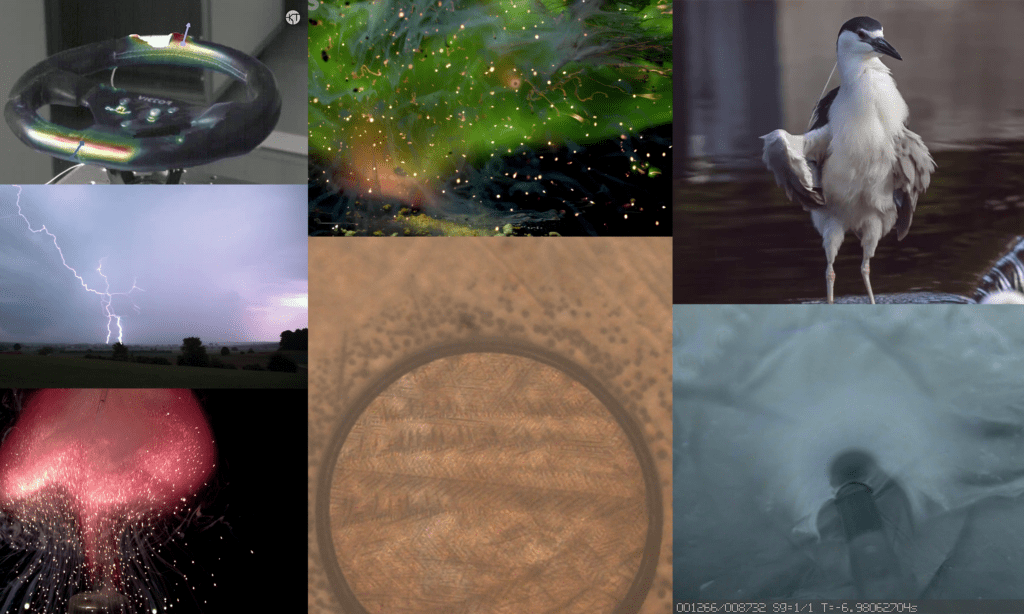Precision Redefined: Real-time DIC with Mercury RT and Chronos Cameras
Breaking New Ground with Mercury MS S.r.o. We’re thrilled to announce a new partnership between Kron Technologies…
For the last few decades high-speed cameras have been impacting different fields of science and engineering. Biology, chemistry, and physics are just a few areas where these remarkable devices are transforming the way we scrutinize and understand our world. The cameras’ ability to capture fast-occurring phenomena opens up new avenues for exploration and discovery.
In this blog post, we will inspect how these cutting-edge instruments are supporting academic research and what insights they are giving us into some of science and engineering’s most challenging questions. Let’s take a closer look at why high frame rate cameras are so useful in academic research.
In the past, studying fast-moving phenomena was often difficult or impossible due to the limitations of technology. Also, due to the expensive price of imaging equipment, its use was mostly confined to the laboratories of academic institutions, private companies or military facilities. Nowadays, high frame rate equipment is more affordable, hence we are experiencing a burst of exciting discoveries regularly. Here at Kron Technologies, we are committed to provide reliable and affordable cameras to individuals willing to unravel the beauty of the hidden world in plain sight.
Recently, the use of these truly remarkable devices has been applied to study fundamental problems of relevant industrial, environmental and scientific interest. For instance droplet motion on a patterned surface[1], secondary ice formation from supercooled water drop collision[2] and the evaluation of sensory information encoding using a biomimetic dynamic sonar emitting device[3]. The findings from these works can pave the way to design more efficient microfluidic devices, broaden our understanding of the formation of ice in clouds and shed new light into the acoustic emission pattern used by certain species of bats, respectively. Chronos cameras have been part of these efforts. Moreover, we expect to see a larger number of studies relying on our devices in the near future. There are other interesting applications related to biology[4], environmental science[5, 9] and engineering[6]. We kindly encourage you to take a look at them and see how Chronos cameras can provide solutions to your scientific, commercial or personal needs.
The burst of applications involving high-speed cameras is due to their temporal and spatial versatility. They can be used to evaluate the motion of submillimeter objects that experience rapid changes, i.e., the deformation and stretching of cells as well as the mechanics of high-performance athletes. We cannot overlook the significant difference in length scale of these two applications. Furthermore, Chronos cameras can be utilized to record the splashing of an ice cube dropped in a glass full of a soft drink to be advertised, an application that requires a few hundreds to approximately 1000 frames per second (fps). Or to record events that require a higher imaging rate to be properly visualized. See the images of high-pressure propellant spray exiting from a nozzle at 21,650 fps[7].
With this we want to highlight that fast framing rate devices can be deployed by seasoned professionals to complement their work as well as by individuals willing to try out new techniques that span beyond the traditionally available 30 fps. We also expect that with time more students, both undergraduate and graduate, embrace fast imaging techniques to support their scholarly activities. The recently completed work by Ikechukwu[8] on assessing efficiency of macro particle classification is testimony of this hope.
In summary, the possible scenarios where high frame rate cameras can be employed offers a wealth of opportunities to venture into. By all means, if you have any comments or questions about your high-speed imaging needs, reach out to our team at Kron Technologies. We are happy to support your efforts and make your ideas a reality.

Stay up-to-date on the latest Chronos Camera tips, upgrades and news
Breaking New Ground with Mercury MS S.r.o. We’re thrilled to announce a new partnership between Kron Technologies…
Droplets deposited on a sufficiently hot surface experience an interesting phenomenon. They skid on a layer of…
Discover the power of Chronos high-speed cameras, designed to meet the demands of content creators and videographers.
Brief history of droplet impact The study of droplet impact can be traced back to the nineteenth…
In this article, we’d like to discuss another interesting topic: computational fluid dynamics, also referred to as...
Fluid mechanics describes the flow of fluid whether at rest or in motion1. The surface of the…